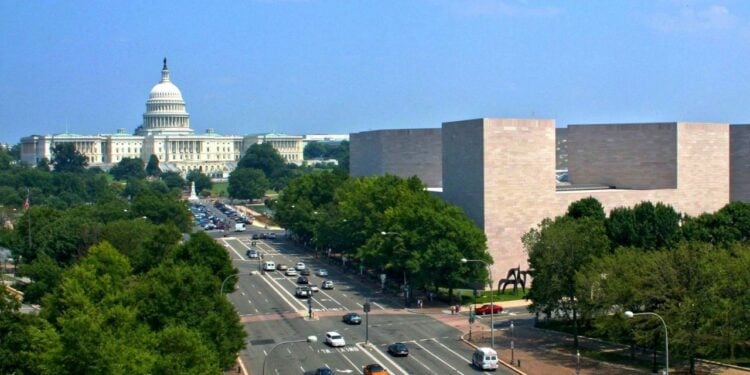The U.S. federal government’s sharp reduction in total amount of office space in Washington, D.C. reflects how views on flexible work are changing across the federal workforce, and it’s forcing city planners to pursue revitalization plans.
After reducing its national office portfolio by over 30 million sq. ft., Costar reports that the federal government is now gearing up for another significant reduction in its office space in the nation’s capital. As the largest office occupant in Washington, D.C., these expected changes present both challenges and opportunities for the post-pandemic recovery of the city.
This downsizing is cited as a direct result of more government agencies adopting remote work policies. The General Services Administration (GSA), the landlord for the federal government, has announced plans to allow several leases to expire this year, and to consolidate offices to reduce property expenses.
Agencies like the Department of State, the Department of Housing and Urban Development (HUD), and certain Treasury Department offices are among those affected by the downsizing. The HUD’s office footprint is expected to shrink by up to 60% by 2038, with four regional satellite offices consolidating into its headquarters at the Weaver Building.
The State Department will also see significant reductions in its Washington and Northern Virginia offices — totaling over 771,550 sq. ft. and saving approximately $11 million, according to CoStar.
These decisions reflect a broader trend across the U.S. related to lease expirations and the workforce. In the federal government’s case, several agencies are consolidating their office spaces and leveraging telework to address the financial strain of underutilized spaces, which is estimated to cost the federal government over $67 million annually.
It’s reported that the GSA currently manages around 173 million sq. ft. of leased office space, and the federal government owns approximately 500 million sq. ft. nationwide.
Washington, D.C. faces record-high office vacancies and availability rates. The substantial reduction in federal office space further adds to the city’s challenges, as federal agencies constitute nearly 20% of its job market. This could lead city officials to design and plan 15-minute cities rather than rely on commercial office space as the main driver for foot traffic to city businesses.
The Office of Management and Budget supports these cuts, emphasizing the need for efficient space utilization and reallocating funds to higher priority needs. Despite several bills introduced in D.C. addressing teleworking in federal agencies, the federal government is demonstrating, so far, its commitment to maintaining flexible work environments as part of the future of work in Washington, D.C.
This real estate strategy highlights the almost inevitable evolution toward flexible work and reveals an urgency for the city to innovate and adapt to sustain economic growth.


 Dr. Gleb Tsipursky – The Office Whisperer
Dr. Gleb Tsipursky – The Office Whisperer Nirit Cohen – WorkFutures
Nirit Cohen – WorkFutures Angela Howard – Culture Expert
Angela Howard – Culture Expert Drew Jones – Design & Innovation
Drew Jones – Design & Innovation Jonathan Price – CRE & Flex Expert
Jonathan Price – CRE & Flex Expert











